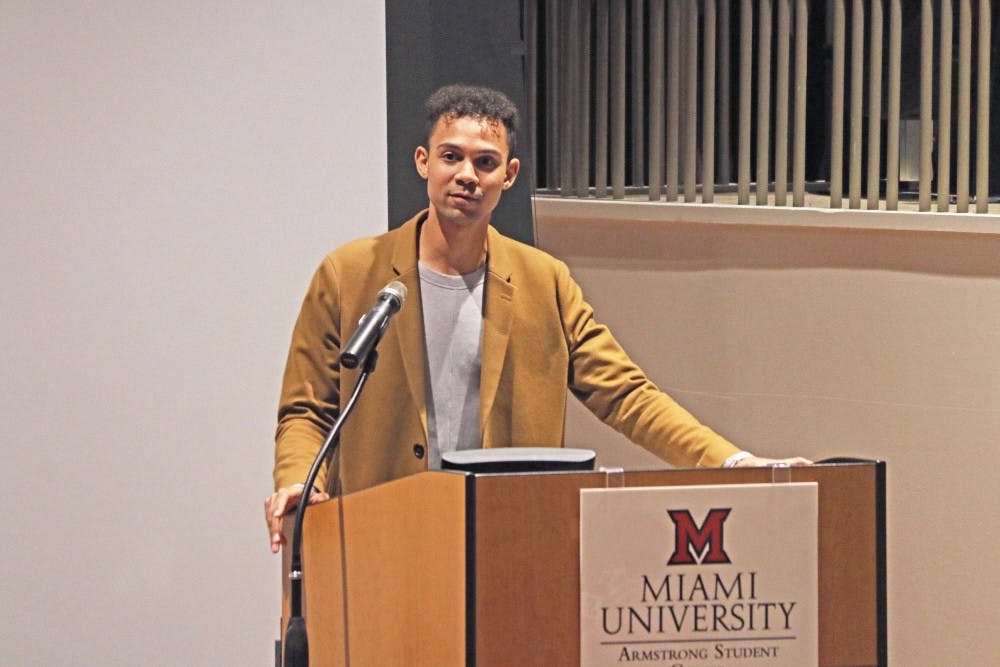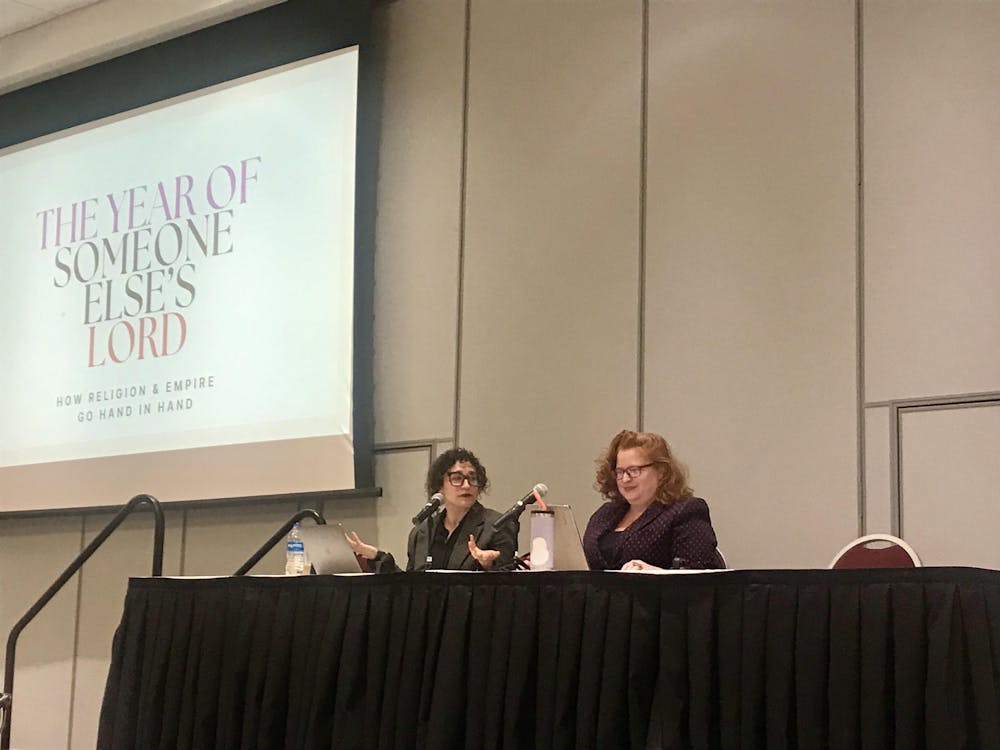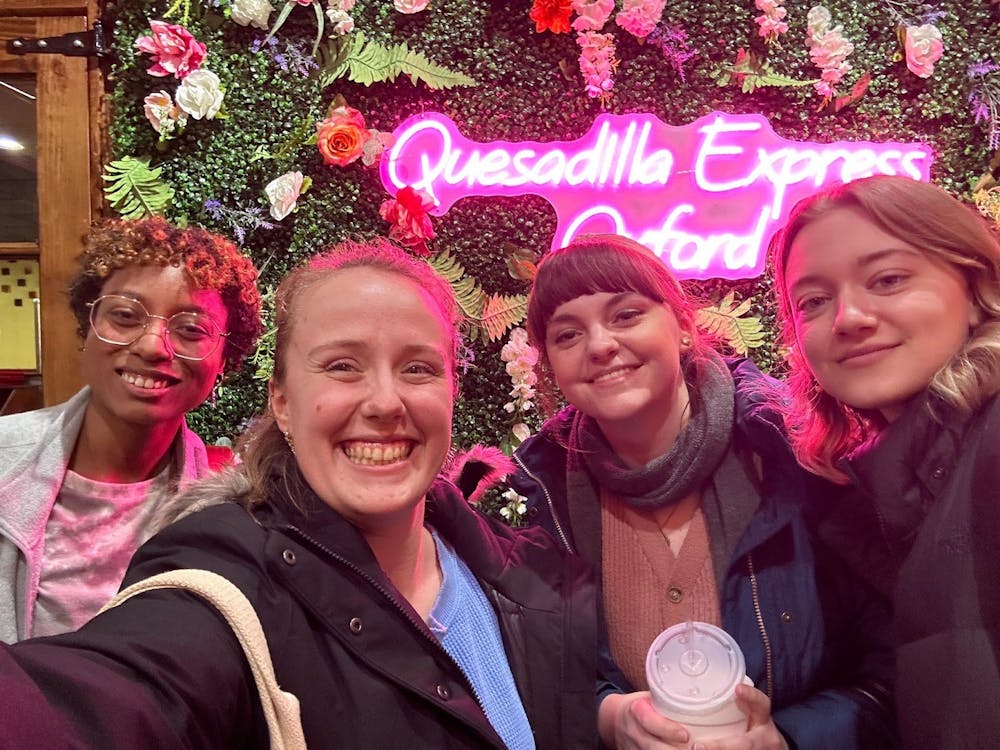Just over four years ago, 18-year-old Michael Brown was shot and killed by white police officer Darren Wilson in Ferguson, Missouri.
While Brown was not the first black teenager to be killed by a police officer, for much of black America, his death was the last straw.
Brown's death was the impetus for the first national protest of the Black Lives Matter movement. The movement has taken the nation by storm since its founding in 2013, and Brown's shooting inspired a new wave of young activists to seek solutions to the issue of police brutality. This wave included a Stanford graduate named Samuel Sinyangwe.
Sinyangwe gave a lecture, "Using Data to End Police Violence," on March 12 at the Harry T. Wilks Theater in the Armstrong Student Center. It was hosted by Miami's geography department as part of its McConnell Lecture Series.
After graduating from Stanford University with a degree in political science, Sinyangwe worked at a think tank called PolicyLink. However, after Brown's death, he felt compelled to shift his focus towards investigating police violence.
"My life changed on August 9, 2014. That was the day that Mike Brown was shot and killed in Ferguson, Missouri, by Officer Darren Wilson," Sinyangwe said.
Sinyangwe said that, while some communities had been experiencing police violence for years before Brown's death, nothing was being done about it because people in power doubted the credibility of the claims.
"We heard challenges from people in power," Sinyangwe said. "We heard skepticism, and we heard doubt. We heard from policymakers, academics and data scientists a skepticism that lived experiences weren't enough -- that they needed to be validated by something called data to be taken seriously."
The federal government does not keep track of the number of people killed by police officers each year but, due to the painstaking efforts of independent researchers, the data exists in the form of online databases. In an audit, FiveThirtyEight found accurate the researchers' estimate that 1,200 people are killed by police every year.
However, Sinyangwe felt that this data was deficient, as many entries did not identify the victims' race, and none of them indicated whether the victim was armed. To fill in these gaps, he began further researching these deaths.
"Every single day, what I would do is work through this data tediously -- finding data from obituaries, from criminal records databases, from social media, from official records, from police departments -- combine it with what was available through those databases, and together that produced Mapping Police Violence," Sinyangwe said.
Mapping Police Violence uses interactive graphics and maps to present various data sets related to police violence, including a map that pinpoints every victim in the past year and a chart demonstrating national trends in police killings. It was launched in 2015 with a single map, but has since grown to include a much wider range of information.
Enjoy what you're reading?
Signup for our newsletter
"The reason we decided to visualize this was because we wanted to make it clear that Ferguson is everywhere," Sinyangwe said.
Indeed, a quick look at the map reveals that in 2018, police deaths occurred across the country, from Eugene, Oregon, to Oakfield, Maine.
After introducing the data on police violence in his lecture, Sinyangwe discussed possible methods of solving this nationwide epidemic. Some of those solutions come by way of Sinyangwe's other online project, Campaign Zero, which digs deeper into the data in search of factors that may explain the higher prevalence of police violence in certain cities and areas.
Such factors include differences in "use of force" policies, the extent to which officers are held accountable for their actions and whether civilian complaints are given any weight in determining an officer's fate.
According to Sinyangwe's data, only 3 percent of officers involved in fatal incidents are charged with a crime, and only 1 percent of those are convicted. Furthermore, those who are convicted receive lesser sentences than civilians who are charged with the same crimes.
Finally, Sinyangwe stressed that the majority of the work for both of his projects is done by volunteers, and that they are continuously seeking people with all different skill sets to push the movement forward toward increased innovation and effectiveness.
"There are 104 million Americans who support the Black Lives Matter movement," Sinyangwe said. "That is more than the 60 million people who voted for Trump. If we could just figure out how to get to that 104 million, that's where we'd create transformational change."




